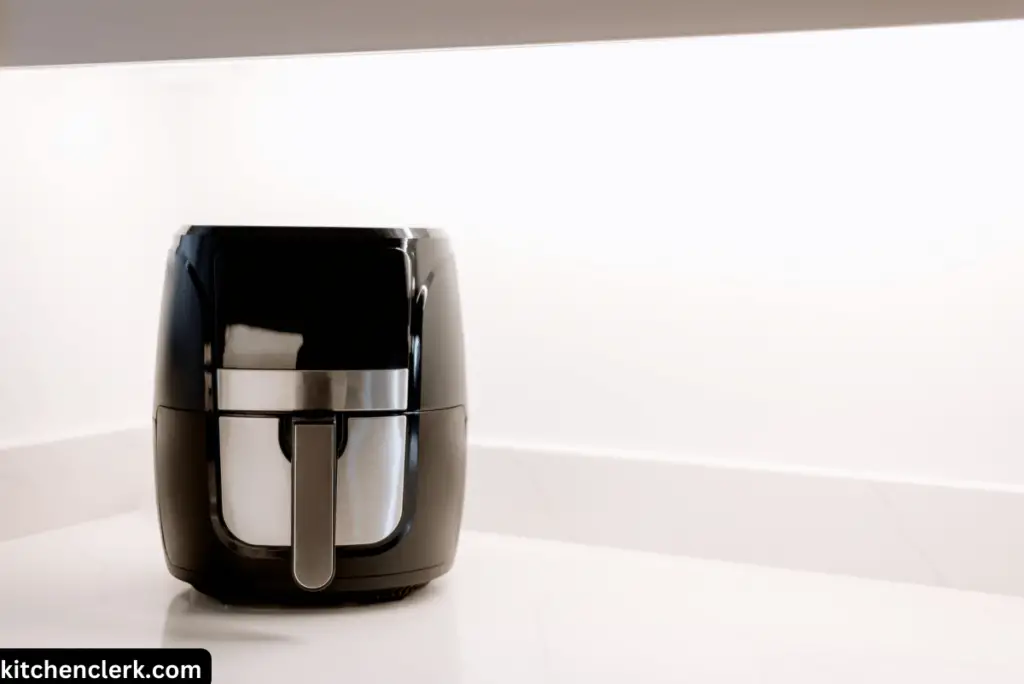Traveling can bring its own set of challenges, especially when it comes to packing. If you’re an air fryer enthusiast planning your next trip, you might be wondering, “Can I bring my air fryer on a plane?” This is a valid question, given how integral this appliance has become in our daily cooking routines.
In this post, we’ll explore the feasibility of traveling with an air fryer, airline regulations, and some practical tips to make your journey smoother.
Whether you’re a frequent traveller or simply want to take your air fryer on vacation with you, it’s important to understand the rules and regulations surrounding the transportation of kitchen appliances.
Let’s dive into the details and find out how to keep your culinary adventures soaring, even at 30,000 feet.
Can You Bring an Air Fryer on a Plane?

Yes, you can bring an air fryer on a plane. However, there are certain guidelines and restrictions that you need to be aware of. You can either carry it as part of your carry-on luggage or check it in as part of your checked luggage.
Size, weight, and wattage restrictions may apply, so it’s important to check with your specific airline. Additionally, consider power compatibility and airline-specific policies. Always verify the regulations provided by your airline before travelling.
Understanding TSA Guidelines
The TSA is responsible for ensuring the safety and security of air travel within the United States. They have implemented strict rules and regulations regarding the transportation of items in passengers’ carry-on and checked luggage. These regulations are designed to prevent any potential hazards or threats onboard an aircraft.
You can read more about TSA regulations here
Carry-On vs. Checked Luggage
When bringing an air fryer on a plane, you first need to consider whether you plan to carry it on board or check it in as luggage. Both options have their pros and cons, so let’s take a closer look at each.
1. Carry-On luggage
Carrying your air fryer as a part of your carry-on luggage allows you to keep it with you at all times during your journey. This is particularly convenient if you have a long layover or are concerned about your appliance being mishandled in the cargo hold.
However, there are limitations imposed on the size and weight of carry-on luggage by airlines, so it’s essential to check with your specific airline to ensure your air fryer meets their requirements.
If you’re planning to carry your air fryer on board, it’s crucial to consider the dimensions and weight of the appliance. Most airlines have restrictions on the size of carry-on luggage, typically around 22 x 14 x 9 inches or 56 x 36 x 23 centimetres.
Additionally, weight restrictions may vary from airline to airline, usually between 15 to 25 pounds or 7 to 11 kilograms.
Another important factor to consider is the wattage of your air fryer. Airlines may have restrictions on the wattage of electronic devices brought on board, so it’s essential to verify if your air fryer falls within the allowed wattage range.
2. Checked luggage
Alternatively, you can choose to check your air fryer as part of your checked luggage. This option allows you to transport bulkier and heavier appliances without worrying about size restrictions. However, there are certain factors to keep in mind when checking in your air fryer.
Firstly, ensuring that your air fryer is properly packed and protected is important to avoid any damage during transit. You can use sturdy packaging materials such as bubble wrap or foam to cushion the appliance and prevent it from shifting within your luggage.
Secondly, you need to be mindful of weight restrictions imposed by the airline. Checked luggage typically has a weight limit ranging from 50 to 70 pounds or 23 to 32 kilograms, depending on the airline and ticket class. It’s advisable to weigh your luggage beforehand to ensure it falls within the allowed weight range.
Lastly, keep in mind that checked luggage goes through a screening process, both at the check-in counter and before being loaded onto the aircraft. It’s essential to comply with any additional requirements or inspections by the TSA to ensure a smooth and hassle-free journey.
Additional Considerations
While understanding the regulations regarding carrying an air fryer on a plane is vital, there are a few additional factors to consider when planning to travel with your appliance.
1. Power compatibility
Different countries and regions often have varying power outlets and voltage requirements. Before traveling, ensure that your air fryer is compatible with the power specifications of your destination. You may need to purchase a voltage converter or adapter to use your air fryer abroad.
2. Airline-specific policies
It’s important to note that airline policies can differ, and certain carriers may have their own rules and restrictions regarding the transportation of electronic devices or kitchen appliances. Before your trip, check the specific guidelines provided by your airline to avoid any surprises or difficulties during your journey.
3. Transportation Security Administration (TSA) PreCheck
If you travel frequently and want to streamline your airport experience, you may consider applying for TSA PreCheck. This program allows pre-approved travellers to enjoy expedited security screening at participating U.S. airports.
While PreCheck won’t exempt you from additional scrutiny if the TSA deems it necessary, it can still save you time and make your travel experience more convenient.
Conclusion
Bringing an air fryer on a plane is indeed possible, whether as part of your carry-on luggage or your checked luggage. It’s important to familiarize yourself with the TSA guidelines, check airline-specific policies, and ensure that your air fryer meets the size and weight restrictions imposed by the airline.
Now it’s over to you! Have you ever travelled with an air fryer? What was your experience like? Share your thoughts and stories in the comments below.
